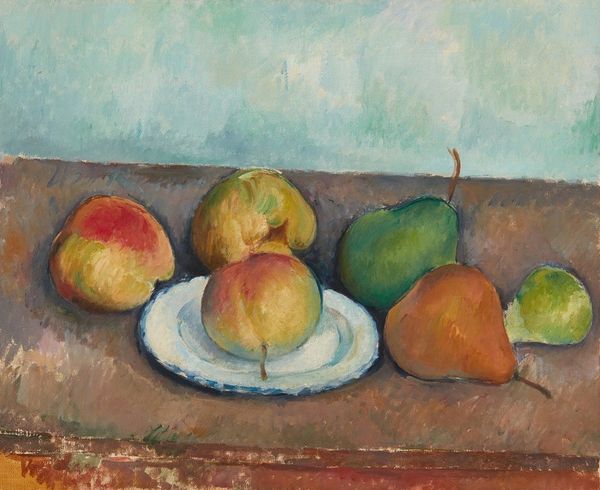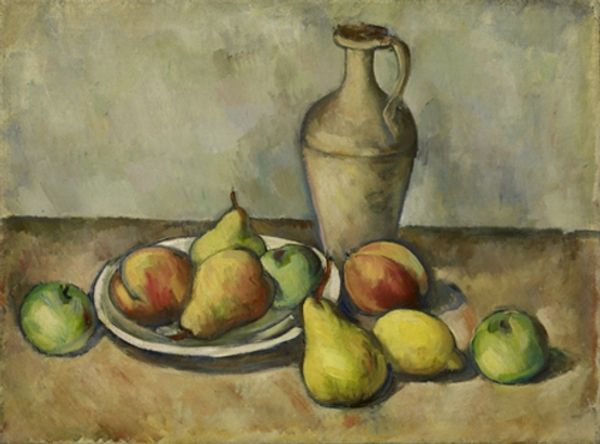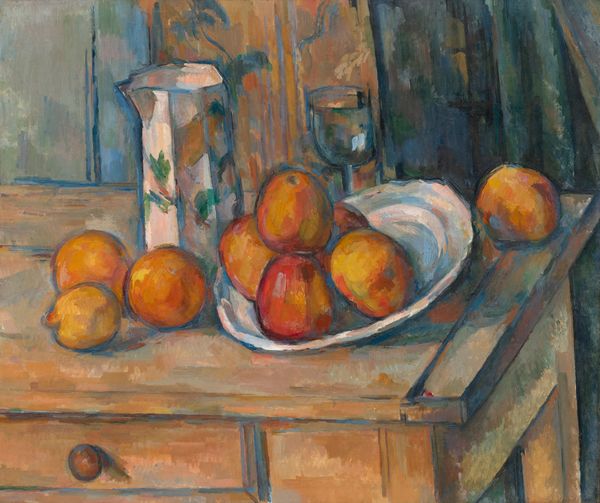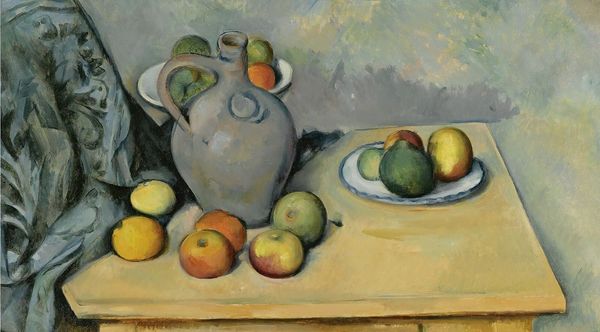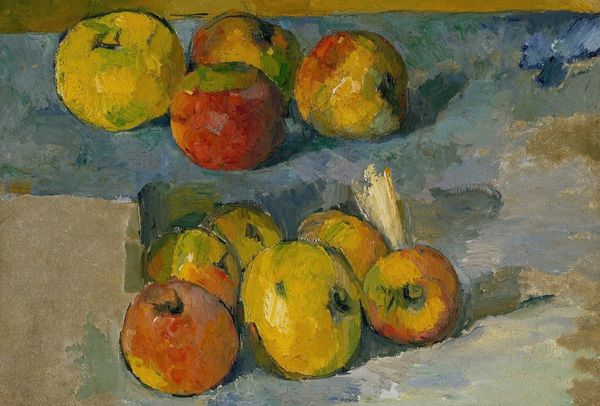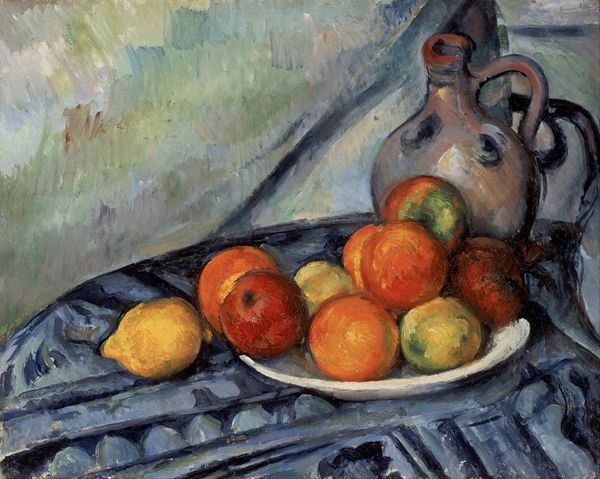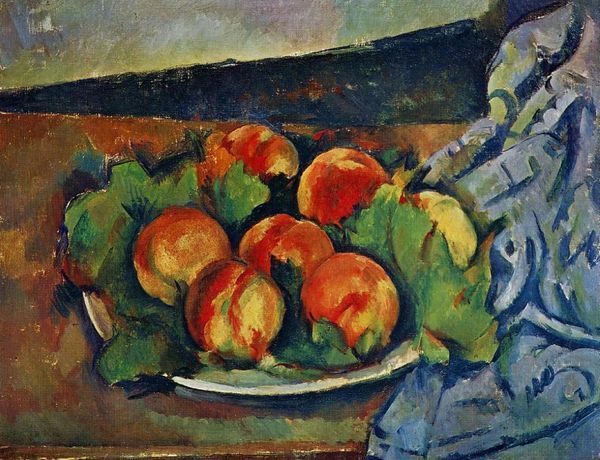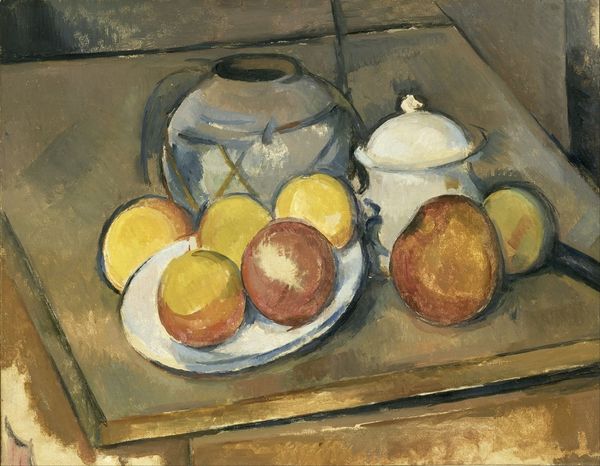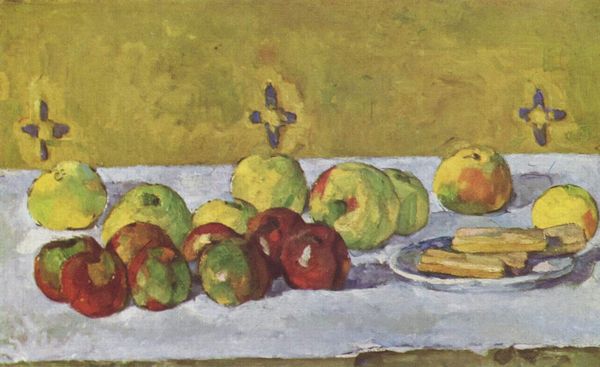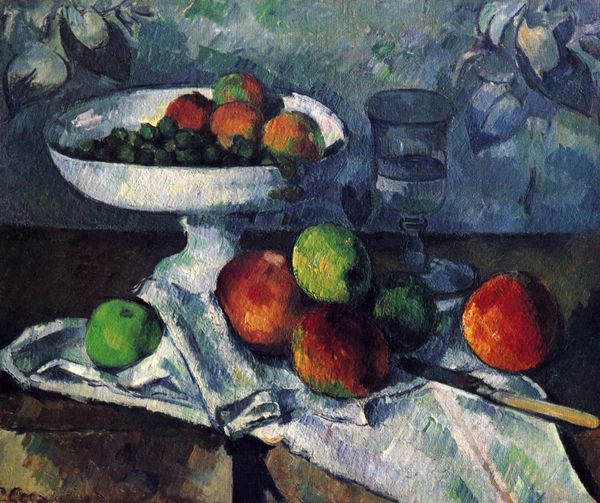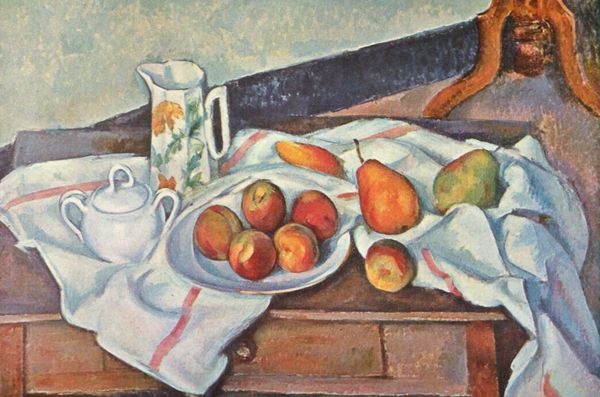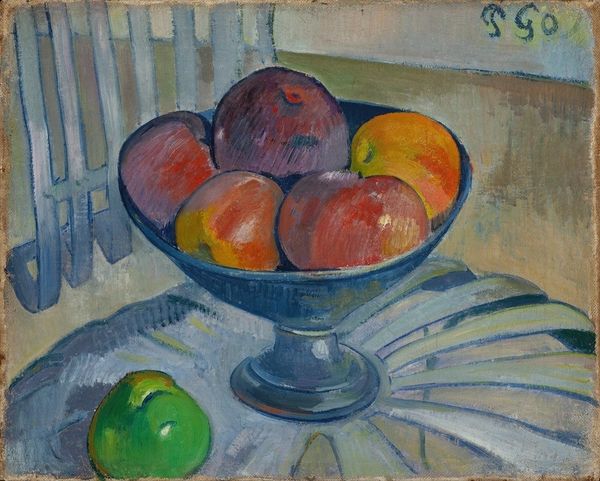
painting, oil-paint
#
painting
#
oil-paint
#
form
#
oil painting
#
post-impressionism
#
watercolor
#
realism
Copyright: Public Domain: Artvee
Curator: Welcome. We're looking at Paul Cézanne's "Les Pommes," an oil painting he made somewhere around 1889 and 1890. Editor: The immediacy of this strikes me. A table, some fruit... almost austere, yet undeniably sensuous with that rough texture. Curator: Yes, seemingly simple, but within that "simplicity" is a radical reshaping of pictorial space and representation, wouldn’t you say? He wasn't just painting apples. He was after something more profound. Editor: Exactly! More profound, more challenging of established bourgeois ideals, really. Considering the rise of photography at the time, verisimilitude in painting felt increasingly…stale. Curator: True. The Post-Impressionists rejected impressionism’s naturalism. But Cézanne takes this further – note his method; building forms with distinct patches of color and distorted perspective. It anticipates cubism! He seeks structural underpinnings in his motifs. Editor: It's so political, though it seems not to be at first glance! Challenging norms. Reflecting shifts in a society undergoing immense transformations in class and economics at the end of the nineteenth century. These ordinary fruits defy a kind of social expectation and "perfection," in my opinion. Curator: Fascinating take! For many, his dedication to portraying the physical qualities and spatial arrangement makes him important. Art critic Roger Fry claimed Cézanne sought "plastic volumes". And yet there's clearly room for a different way of understanding those intentions. Editor: Fry's approach certainly centers formal elements –but reducing Cézanne solely to formal concerns risks missing out on its broader historical and intellectual impact! Art never exists in a bubble, especially now. The stakes feel different, don't you think? Curator: You know, I think the beauty lies precisely in this potential for continuous reinterpretations and the continued discourse around "Les Pommes". Editor: Absolutely, a work isn’t a fixed, dead object. These apples refuse to sit still – like any relevant work should do in the face of shifting cultural contexts.
Comments
No comments
Be the first to comment and join the conversation on the ultimate creative platform.
